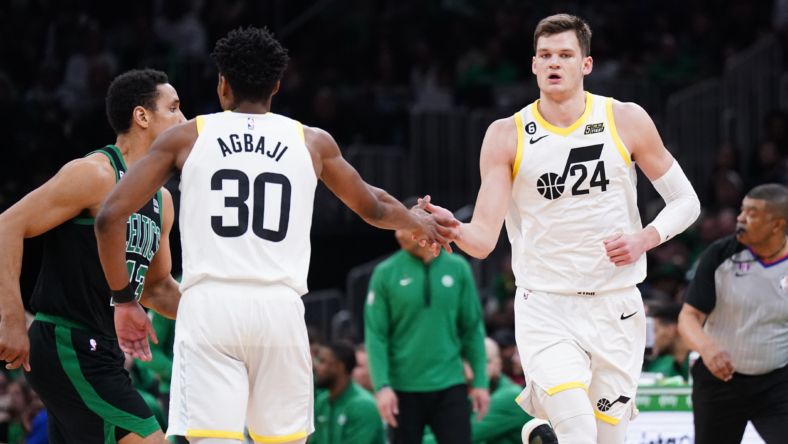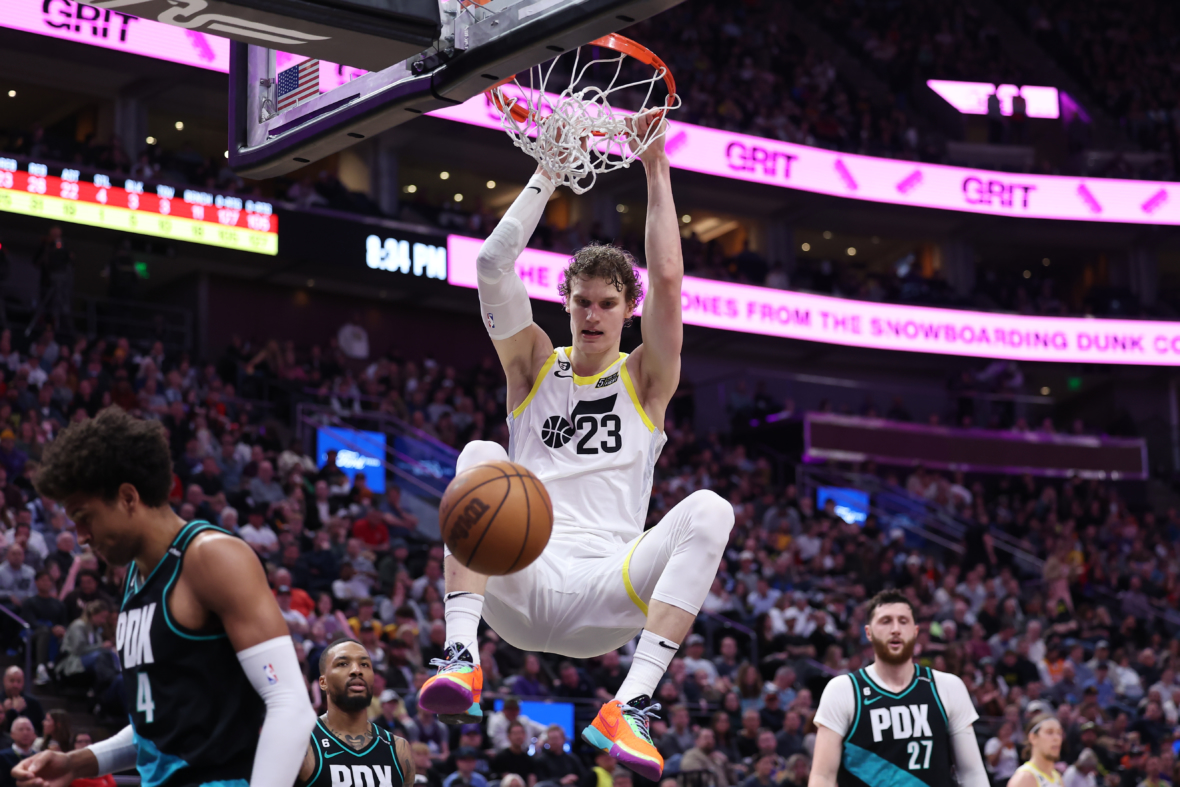
Parity, increased revenue sharing, and unprecedented cumulative NBA talent have closed the gap between the league’s have and have-nots. Even the teams at the bottom of the standings have talented young cores.
The Utah Jazz were expected to go from one end of the spectrum to the other when they traded their two stars, Donovan Mitchell to Cleveland and Rudy Gobert to Minnesota, last summer. They received a king’s ransom for Gobert: Malik Beasley, Patrick Beverley, Jarred Vanderbilt, Leandro Bolmaro, No. 22 pick Walker Kessler and four first-round picks.
When they traded Mitchell, they got back Lauri Markkanen, Ochai Agbaji, Collin Sexton, three unprotected first-round picks (2025, 2027, and 2029), and two pick swaps (2026 and 2028). All of these assets proved unexpectedly fruitful in the present, leading the Jazz to be one of the few teams remaining in NBA’s so-called purgatory.
Entering the Sunday games, the Utah Jazz are 12th in the Western Conference at 36-41, but had to trade a slew of their key players to expedite the losing at the deadline, including Beasley, Vanderbilt, and Mike Conley Jr., a holdover from the Jazz’s previous 50 plus win seasons. The Jazz are 9-12 since the trade deadline but are still within easy reach of the Play-In Tournament. Jazz executive Danny Ainge, a shrewd negotiator, surely didn’t anticipate the Jazz to be this competent after trading away a perennial All-Star (Mitchell) and three-time Defensive Player of the Year (Gobert).
Utah Jazz’s exceptional frontcourt

But here they are, a roster field with prideful dawgs refusing to tank on purpose. Good on them. It’s also because of the unexpected emergence of 25-year-old Lauri Markkanen, who has become an All-Star level player in his sixth season. He is averaging 25.7 points and 8.6 rebounds on 50 percent field goal shooting and 39.6 percent from three this season.
Markkanen, as well as rookies Kessler and Agbaji who were acquired from the Timberwolves and Cavaliers, have solidified the Jazz as having one of the best frontcourts in the NBA. Agbaji is emerging as a legitimate 3-and-D option, shooting 37.7 percent from three. At the same time, Kessler has almost totally replaced Gobert’s stats when he was with the team. According to FiveThirtyEight’s Raptor rating, Kessler is only four spots down from Gobert. Furthermore, he is sixth in Plus-Minus defending the rim, at a minus-12.5%. His rookie-year averages are 9.2 points per game, 8.4 rebounds per game, and 2.4 blocks per game.
The trades at the deadline were an attempt by Ainge to shed some of the better-than-average role players for further draft capital and expiring deals, which makes sense. But why didn’t he go all the way with it? By retaining guys like Jordan Clarkson, Kris Dunn, Collin Sexton, and Kelly Olynyk, they maintain positioning in the NBA’s dreaded middle tier.
How Lauri Markkanen fits into Jazz’s future

Most puzzling is where Markkanen fits into all this. The Utah Jazz have amassed 15 first-round picks and swaps through the end of the decade. They also own picks, with their 2024 and 2025 top 10 protected or otherwise conveyed to the Oklahoma City Thunder. It makes sense they would want to tank to control their future moving forward. That will be hard to do with half the roster being above-average veterans and an All-Star-caliber player not even close to his prime in Markkanen.
They should have sold high on the Finnish forward before the deadline, grabbing more unprotected first-round picks and securing their status as a tanking team. Holding firm on their five best players (excluding Kessler) was an odd decision that could be rectified this summer if Ainge gets back into teardown mode. But for now, the team is one of the few in the league not good enough to make the playoffs consistently and not bad enough to guarantee competition for the top talents of future Lotteries.
Jazz coach Will Hardy has his team of veterans and quality role players playing hard. In fact, their overachievement has been pretty glaring.
The Utah Jazz are seventh in offensive rating at 115.7, 11th in assist% at 61%, fourth in offensive rebounding % at 31.2, fifth in rebounding % at 51.2%, 12th in pace (100.85), and 14th True Shooting % at 58.5. These numbers are impressive considering the efficiency and output Gobert and Mitchell impacted, as well as the carousel of players that have come in and out of the rotation.
The final five games for the Jazz will be pivotal in where they land in this summer’s Lottery, although a top-five spot is unlikely. But with the remaining games against the Brooklyn Nets, Los Angeles Lakers (twice, Oklahoma City Thunder and Denver Nuggets, the Jazz can undoubtedly put themselves in a position to draft somewhere between six and 12. But, as Kessler and Agbaji were the 22nd and 14th picks in the 2022 draft, who’s to say the team’s future isn’t waiting somewhere exactly where the team will be selecting? That is especially the case since they will also be equipped with Minnesota’s first-round pick and maybe even Philadelphia’s, as the Jazz are owed the least favorable pick of Houston, Brooklyn, and Philadelphia.
But the Jazz can only control their destiny. And with that in mind, a full teardown, including trading guys that have become hometown heroes in Markkanen and Clarkson, should happen sooner rather than later. Otherwise, their record will guarantee purgatory moving forward.
Lee Escobedo covers the NBA for Sportsnaut. You can follow him on Twitter at @_leeescobedo